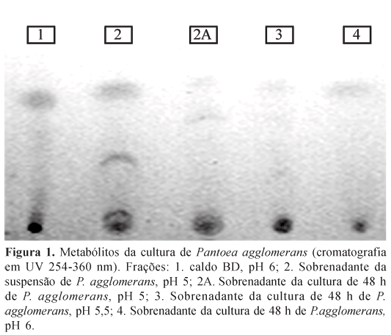Rosellinia necatrix Prill induces the white root rot of apple, a disease that causes severe losses in orchards located in Southern Brazil. The management of the disease is mostly preventative and include usage of less susceptible rootstocks and soil fumigation. Protection of nursery apple trees before planting with an antagonistic bacterium Pantoea agglomerans was recently proposed to reduce the disease incidence. The aims of this research were to know about the pathogen-antagonic bacterium relationships and the effect of cell concentrations, pH, temperature and carboximethyl cellulose(CMC) in the culture media on the growth of the pathogen, the antagonic organism and on the disease control. Results showed that growth of P. agglomerans was improved on pH 5.5 to 6.0 , and at temperature of 20 °C and 30 °C. Mycelia of R. necatrix isolates was inhibited when grown in a media previously colonized by the antagonist and the two isolates were inhibited when in this media were added 0.25 % and 0.5 % of CMC in the culture media. Protection of apple plants from R. necatrix infection was observed with 10(7), 10(8) and 10(9) ufc/mL and different CMC concentrations. Root development was improved when cell concentration was 10(9) ufc/mL and when CMC was used. Formulation of P. agglomerans will make possible the use of biocontrol in the integrated management of the disease.
biological control; formulation; root rot




